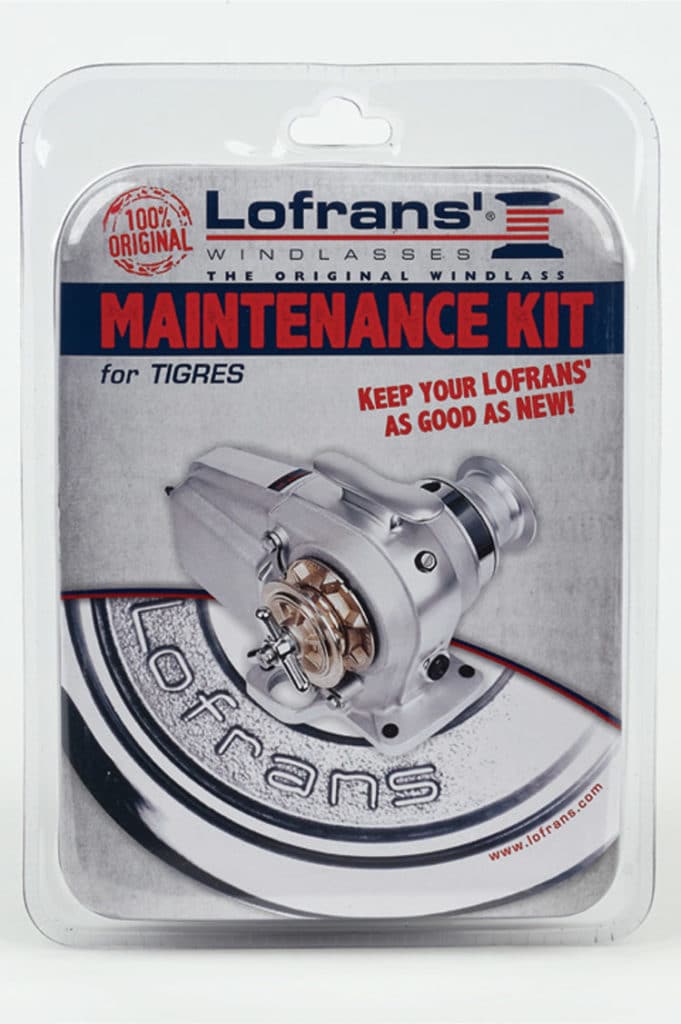
- When it comes to inspecting your windlass, start by disassembling the chainwheel/clutch cone system and lubricate all moving parts/fasteners.
- Clean all polished, chromed or painted parts with a mild detergent. You can wax and polish the metal surfaces for added protection.
- Check the rope/chain splice. Most anchor rodes are nylon, which has excellent stretch characteristics for load/shock absorption. However, these nylon rodes tend to shrink, at the splice, around the first link of chain. If you find that the splice is tight to the chain, your windlass may become challenged to transition from rope to chain during recovery. When a splice is new, ideally, there is a gap between the chain and the rope, allowing for flexibility as the windlass transitions from rope to chain. When the rode dries in the heat of the anchor locker, it is common for the rope to shrink down tight to the first link of chain. There are a few simple tips that can improve this joinery. Try rolling the splice in your hands and flex and knead it to soften. It’s best if you can see a little daylight between the rope and the chain, which greatly helps the windlass manage the rode around the relatively small diameter gypsy wheel. If kneading the rope is not loosening and softening the splice sufficiently, then gently work a small flat-head screwdriver or a splicing fid in between the rope and the first link of chain and work the splice loose. If the rode has stiffened and coils like your garden hose, try soaking it in a bucket of cool water and fabric softener. Avoid warm or hot water as that causes the rope to shrink. The spring-loaded pressure finger on your windlass will then be able to push the rope deeper into the v-groove below the chain link pockets, helping to better “grip” the rope during recovery. If the splice remains tight after trying these tips, you can reverse the rode and re-splice to the bitter end which will likely be a bit softer.
- Check the rode for hockles, pigtails and fraying that may have occurred from abrasion
- Check the electrical cable connections for corrosion and tightness.
- For horizontal windlasses, check the windlass housing for wear.
- Inspect gearbox for signs of oil leaks – seal kits are often available.
Jim Thomas shows how to properly and safely inspect the internal workings of a Lofran’s Tigres windlass and perform the necessary annual maintenance.

Maintenance Kits
Do you have all the parts you need on board to perform maintenance on your windlass?
Advertisement
Every Lofrans windlass has a corresponding maintenance kit that includes the most common replacement parts in an all-inclusive package
Vertical – Project 500, Project 1000 & Project 1500
Advertisement
Horizontal – Royal, Kobra, Dorado, Cayman, Tigres and Falkon
Each kit Includes:
KEYS | CIRCLIPS | FASTENERS | SEALS








